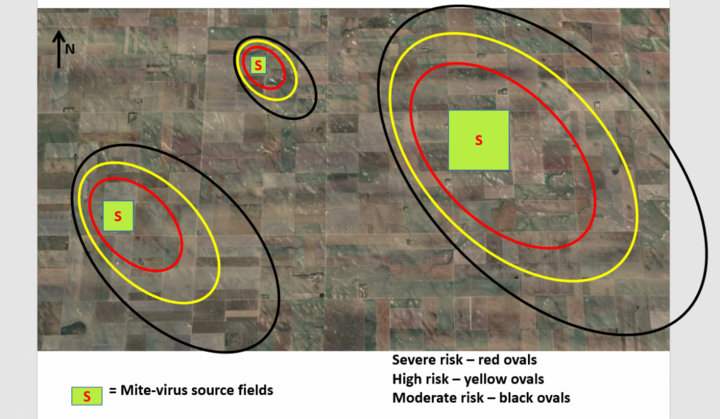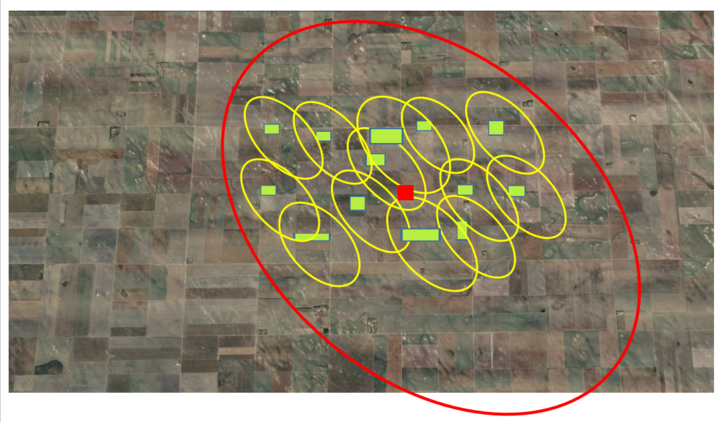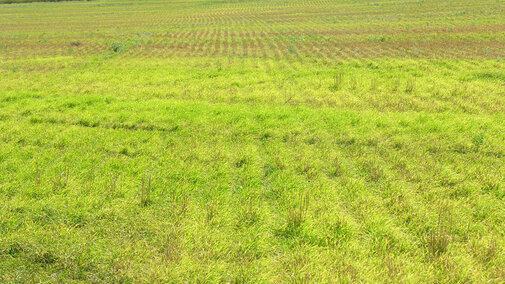The weather all across Nebraska this summer has been a challenge. But wheat growers in western Nebraska have additional concerns because of hailstorms that rumbled through the region in the last three or so weeks before wheat harvest. It is these hailstorms that often result in the rapid germination of shelled seeds resulting in pre-harvest volunteer wheat. Wheat curl mites are very numerous just prior to harvest and will rapidly infest this emerging volunteer and infect it with virus.
Effective management of volunteer wheat in high-risk source fields is critical to protecting the 2020 crop from disease.


Volunteer wheat that emerged shortly before wheat harvest, if left uncontrolled until wheat emergence in the fall, virtually assures serious mite/virus buildup and spread through the fall. Many growers may remember the serious virus issues seen in parts of the Panhandle in 2017 that resulted from widespread hailstorms in 2016. Growers in areas where this pre-harvest volunteer is present need to be serious in their attention to controlling the volunteer and breaking the green bridge to stop the potential for serious virus epidemics in next year’s wheat crop.
The “sphere of influence” around fields that serve as mite and virus sources will vary with the distance and direction from that source field (Figure 1). The closer a wheat field is to the source field, the greater the risk. As the distance from the source increases, the risk decreases. However, when hail occurs across large areas, the concentration of serious source fields in a neighborhood can result in that “sphere of influence” extending beyond the original hail areas (Figure 2). In these instances, effective management of volunteer wheat in the high-risk source fields is increasingly important.
Pre-harvest volunteer carries the highest risk for developing virus issues the following year, but other risk factors also occur. Poorly controlled volunteer wheat emerging before wheat harvest within summer crops, such as sunflowers, millet, corn, etc., can have a high likelihood of serious mite infestations. The risk level for this will depend on the volunteer density within the crop and subsequent mite density. Additionally, an overlap of growing (green) corn adjacent to emerged winter wheat in the fall can result in virus spread; this risk increases with degree of overlap of the crops. Additional risk can result from mite host crops (e.g., foxtail millet, oats, wheat) or when these crops are used as companion crops or cover crops that emerge before or during wheat harvest in an area, grow over summer, and remain green until after wheat emergence in the fall.
Managing green bridge hosts in these high-risk areas is the most important option available to growers. It is also important to avoid early planting of winter wheat in these high-risk areas as early-planted wheat will be at greater risk. Virus-resistant varieties are beginning to become available in areas of the Great Plains, but adapted varieties with strong virus resistance are limited in Nebraska.
When mite presence is great enough to provide increased risk, several environmental factors also will increase the potential impact. Cool and/or wet summers will encourage volunteer wheat and enhance mite survival. Warm, dry weather through the fall, particularly warm conditions that continue through October and into November, results in increased wheat curl mite reproduction and movement of the mite and buildup of the virus in the new crop wheat.
Because of the significantly elevated risk of virus issues resulting from widespread hailstorms just prior to wheat harvest, every effort should be taken to control this volunteer green bridge before planting the next wheat crop.
To learn more about the scope and scale of seasonal mite movement, see this video: Wheat Curl Mite Time Machine: An animation demonstrating mite movement and virus impact.
To learn about the importance of and methods for controlling volunteer wheat see the following video: Surviving the Green Bridge.

